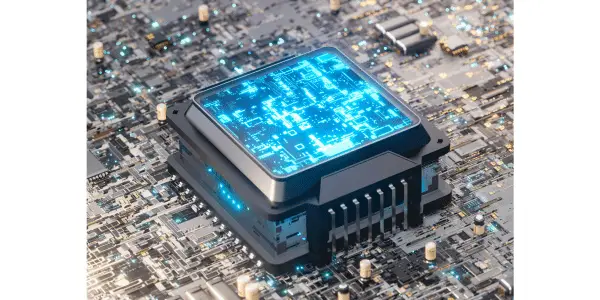Address
304 North Cardinal St.
Dorchester Center, MA 02124
Work Hours
Monday to Friday: 7AM - 7PM
Weekend: 10AM - 5PM
Address
304 North Cardinal St.
Dorchester Center, MA 02124
Work Hours
Monday to Friday: 7AM - 7PM
Weekend: 10AM - 5PM

OpenAI, the creators of ChatGPT, have been pondering a major step—building their own AI chips. Now, it looks like that step is becoming a reality. According to United Daily News, OpenAI is teaming up with TSMC to develop these new chips. But here’s the interesting part: instead of choosing the well-established N4 or N3 process nodes, OpenAI is aiming for TSMC’s next big advancement—the 1.6 nm A16 process node.
By choosing the A16 node, which is still in development, OpenAI is making a strategic decision that highlights its focus on the future. Currently, they spend a lot of money to keep ChatGPT running, largely because they depend on Nvidia’s expensive AI servers, which are also used by major companies like Alphabet, Amazon, and Tesla. OpenAI’s plan to create its own chips is driven by the goal of reducing these high operating costs. While it’s costly to design and build custom chips, the long-term benefits could include significant savings and greater control over their technology.
OpenAI’s decision to develop its own AI chips marks a significant shift in its strategy, driven by several key factors.
Running ChatGPT and similar AI operations is incredibly expensive, primarily due to the high costs associated with Nvidia’s AI servers. Nvidia’s hardware is the industry standard, heavily utilized by tech giants like Alphabet, Amazon, Meta, Microsoft, and Tesla, who collectively invest hundreds of millions in these advanced superchips. By developing its own chips for AI, OpenAI aims to reduce these ongoing operational costs, even though the initial investment in designing and developing custom chips is substantial.
Initially, OpenAI considered using TSMC’s N5 node, a more cost-effective and well-established option. However, in a bold strategic move, they decided to go with the A16 node instead—a technology that is still under development. The A16 node, which will succeed the N2, is expected to feature gate-all-around (GAAFET) nanosheet transistors and TSMC’s innovative Super Power Rail, a backside power delivery system that promises enhanced power efficiency and performance.
OpenAI might not be tackling this challenge alone. There are rumors that companies like Broadcom and Marvell have been approached to assist in chip development, despite their limited experience with TSMC’s most advanced nodes. Additionally, speculation suggests that Apple could be involved, potentially collaborating with OpenAI to develop AI chips that might eventually replace Google’s servers in Apple’s own systems.
Here’s the basic motivations behind this decision.
| FACTOR | DETAILS |
|---|---|
| Cost Pressures | High costs from relying on Nvidia’s AI servers; potential for long-term savings chips |
| Strategic Leap | Opted for TSMC’s A16 node over the more established N5; A16 offers advanced performance with GAAFET and Super Power Rail |
| Potential Partners | Possible collaboration with Broadcom, Marvell, and Apple, leveraging their expertise and resources |
OpenAI’s decision to develop custom AI chips is more than a technical upgrade—it’s a strategic shift with far-reaching implications.
Operational Efficiency
By developing its own chips, OpenAI could significantly reduce the high costs associated with Nvidia’s hardware. This move paves the way for more sustainable operations as competition in the AI space intensifies.
Technological Edge
Opting for TSMC’s A16 node, a still-in-development technology, positions OpenAI at the forefront of AI performance. The A16 node promises to enhance the benefits of AI by providing faster, more efficient processing. With advanced capabilities like GAAFET nanosheet transistors and Super Power Rail, offering better power efficiency and performance.
Strategic Partnerships
Potential collaborations with companies like Apple, Broadcom, and Marvell could provide OpenAI with the support it needs to navigate the complexities of cutting-edge semiconductor development.

The A16 process node isn’t just an incremental improvement—it’s a leap forward in semiconductor technology.
Here’s why I think this is cool.
1 – The A16 node will feature GAAFET nanosheet transistors, which provide better control and performance compared to current designs.
2 – This innovation in backside power delivery is set to improve power efficiency, reducing energy consumption—a critical factor as AI demands grow.
3 – Investing in A16, a node still under development, shows OpenAI’s commitment to long-term innovation. This move could set new standards for AI chip design, ensuring that OpenAI remains at the cutting edge.
Performance Boost
The A16 node is set to deliver 8-10% faster processing speeds while using 20% less power than the older versions. In the world of AI, where every millisecond can make a difference, this kind of boost could really shake things up.
Sustainability
As more businesses focus on sustainability, the energy efficiency is becoming a big deal. The A16’s power-saving features make it a smart pick for companies looking to cut down on energy use and reduce their environmental footprint.
Things just got a lot more exciting with OpenAI’s decision to build its own custom chips. This move is set to reshape business strategies across industries. As OpenAI rolls out its A16 process node, here’s what you can expect:
Hyper-Customization
As AI applications become more specialized, the need for customization will skyrocket. Companies that design and use chips tailored to their unique needs will have a clear advantage over their competitors. For instance, they will enhance various chatbot types, improving performance and interactivity.
Real-Time Adaptation
Businesses can be more responsive to market shifts and customer demands. Turning data into insights and tools with lightning speed will become the norm.
Sustainability as Strategy
Energy efficiency will be a key part of business strategies, allowing companies to cut costs while hitting their sustainability targets.
In short, OpenAI’s decision to build its own custom AI chips with the A16 node is a bold, future-focused move that positions the company at the forefront of AI innovation and sets the stage for broader industry transformation.